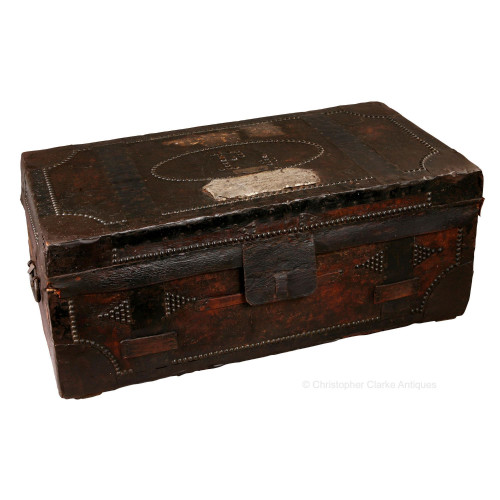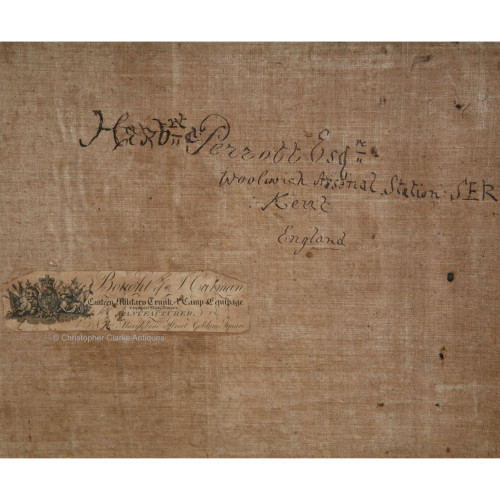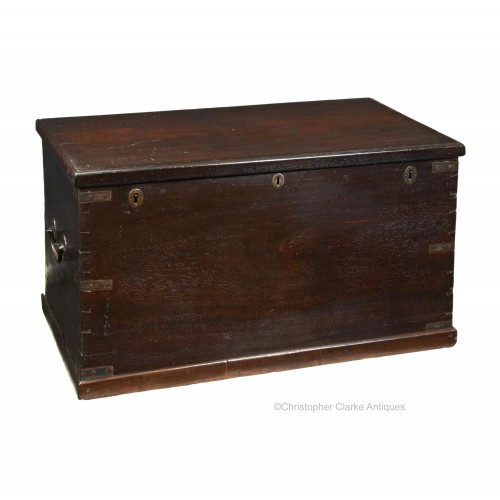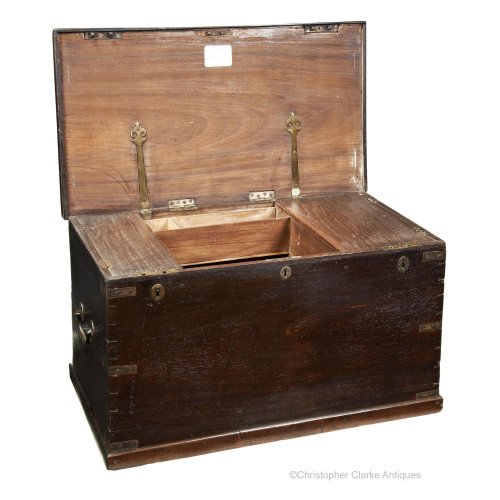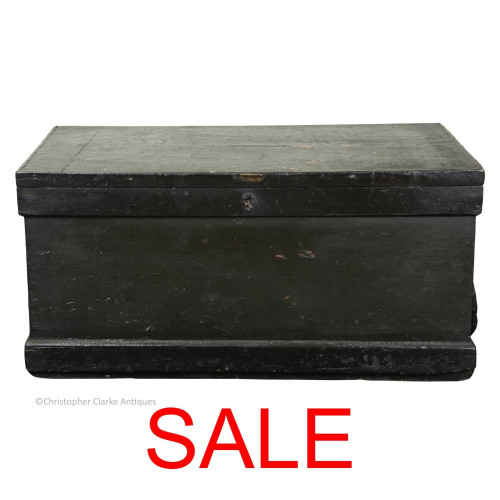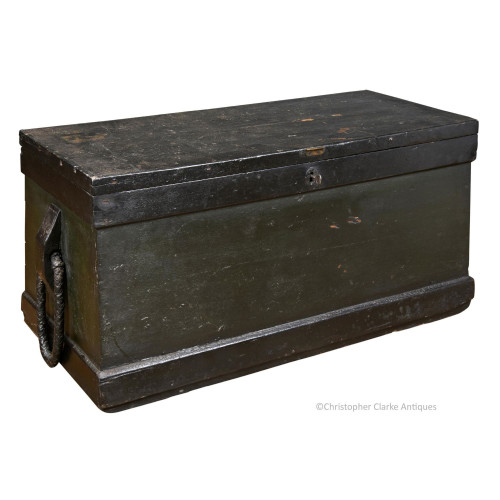Major Armstrong's Chinese Export Trunk
Major Armstrong's Chinese Export Trunk
82846
A black leather on camphor wood trunk made in one of the Chinese ports for export to the Western market.
The trunk has brass edging and corners with straps to the sides where they meet the base. It also has brass dome headed studs to the edges and forming a large cartouche to the top, within in which an engraved name plate for 'Major E. Armstrong, 45th Regt.' is engraved. The interior of the top has three camphor bars running from front to back to add strength. The lid has a brass ring handle and the escutcheon is a brass shield. There are brass carrying handles to the sides.
Elliott Armstrong purchased all his ranks starting with Cornet on the 25th March 1823. Two years later he became a Lieutenant and a year later, in 1826, a Captain. He bought his Majority in the 45th Regiment on the 20th of February 1835. He is best known for his actions at Bossenden Wood, between Hernill and Dunkirk in Kent on the 31st of May 1838.
After the unsuccessful arrest of John Nichols Tom, who had adopted the name of Sir William Courtenay, resulted in the death of a local constable, the army was sent for from the Canterbury Garrison. Courtenay was a Cornishman who left his wife and moved to Kent where he ran for election in 1832. Although unsuccessful, with doubts about his true identity, he became popular, making the most of the unrest from the Poor Law amongst the local labourers. He was convicted of perjury in 1833 at a trial of smugglers and served his time in a lunatic asylum after his wife's intervention. On his release, instead of returning to his family, he continued where he left off. On the 31st of May 1838, he had been protesting in the area with a band of his followers. The local landowners informed the magistrate who ordered his arrest, which failed. News of the constable's death led to the army being called. Major Armstrong, with three junior officers and about 100 men of the 45th, left their Canterbury barracks to deal with the unrest. They found Courtenay and his supporters in Bossenden Woods and outnumbering them two to one, divided to make a pincer movement. The protesters were armed with sticks but Courtenay and one other had pistols and a sword. Lieutenant Henry Boswell Bennett, with his soldiers, approached Courtenay in a clearing. Bennett was shot dead by Courtenay. He in turn was also killed as Armstrong attacked from the rear, shooting and charging with bayonets. The action is thought by many to be the last battle fought on British soil. Eleven died in all, nine insurgents and two sent to deal with them. A roundup of Courtenay's supporters followed and eventually ten men stood trial at Maidstone Assizes in August on a charge of murder. All were found guilty and sentenced to death. This was commuted to transportation for life for two and a sentence of one year for the others.
It is probable that this trunk was in Major Armstong's quarters at the Canterbury Garrison when the battle took place as he became a Major three years earlier. It is typical of many China Trade Trunks and the black has rubbed to the leather in places to give a nice mottled colour. Accompanying the trunk are a two glass plate photographs, one of Armstrong and the other of a painting of the battle. There are also a number of cabinet photograph cards which presumably are relatives of the Major. It is a good size and could be used as a coffee table or for storage at the end of a bed. Circa 1835.
Dimensions:
Circa 1835.
Leather on Camphor Wood
Chinese Ports
Major E. Armstrong, 45th Regt.
Chines Export Furniture
Good
RELATED ITEMS













